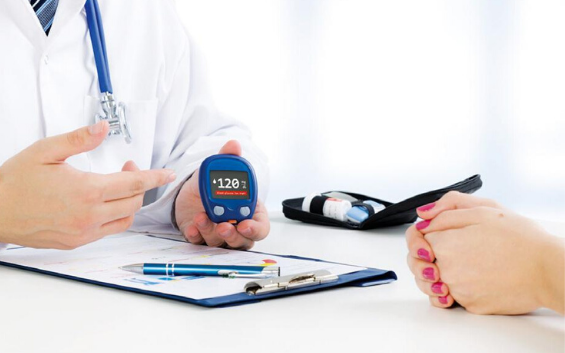One of the most serious chronic difficulties is that of the diabetic foot. It is estimated that between 10 and 30% of patients with foot ulcers will require an amputation.
Diabetes Mellitus is a disease that affects the way the body uses blood sugar (glucose). Glucose is a source of energy for the brain and for the cells that make up tissues and muscles. Therefore, excess blood sugar causes health problems.
Currently, and according to the World Health Organization, about 420 million people worldwide have diabetes, particularly in low and middle-income countries. As a consequence, the disease has increased dramatically in recent decades, constituting one of the biggest problems in the Public Health system.
In Argentina, diabetes is a public health problem of great relevance given its high morbidity and mortality and high socioeconomic burden. According to a document presented by the Ministry of Health of the Nation and Presidency of the Nation (2016), it is responsible for almost 50% of nontraumatic amputations of lower limbs.
The cause of diabetes varies according to the type:
• Type 1 and 2 diabetes: chronic diabetic conditions, that is, that last over time.
• Prediabetes: blood sugar levels are higher than normal, but not at the level of diabetes.
• Gestational diabetes: occurs during pregnancy and may disappear when the baby is born.
Type 1 and 2 diabetes are the most common. Symptoms may vary depending on the amount of blood sugar. Sometimes type 2 diabetes has no symptoms when it starts. On the other hand, type 1 diabetes usually presents symptoms quickly.
Some signs of type 1 and 2 diabetes are:
• Be constant
• Frequent urination
• Extreme hunger
• Weight loss for no apparent reason
• Constant fatigue
• Irritability
• Vision problems
• Infections in the gums, skin and vagina
Diabetes has no cure. However, its treatment aims to keep blood glucose levels within normal limits, thus minimizing the risk of complications associated with the disease. Insulin is given for type 1 diabetes. In type 2 diabetes hypoglycemic drugs are used and insulin is sometimes given.
What happens if Diabetes is not treated?
If diabetes is not treated properly, it can trigger long-term complications. Among them: cardiovascular diseases, nerve damage, kidney damage, eye damage, skin diseases, hearing impairment and depression.
One of the most serious chronic complications of diabetes is that which occurs around the foot. Poor blood flow in the feet causes injuries such as wounds and blisters that may be accompanied by serious infections and poor healing. Therefore, sometimes it is required to amputate fingers, feet or legs.
According to the International Consensus of the Diabetic Foot of the International Working Group on the Diabetic Foot is defined as a diabetic foot to any infection, ulcer or destruction of the tissues of the foot associated with diabetes.
The diabetic foot is a frequent cause of hospitalization. Ulcers and amputations are a major health problem that generates a high social and economic cost to the patient, his relatives and the health systems. It is estimated that between 10% and 30% of people with diabetes with a foot ulcer will eventually require an amputation, of which 60% are preceded by an infected ulcer.
How to treat diabetic foot?
The treatment of foot ulcers varies depending on the severity of the wound. Generally, methods such as surgical debridement are used to remove dead tissue and thus keep the wound clean and promote healing. The wound should be checked frequently by the doctor. When there is a serious loss of tissue or a very advanced infection, the amputation is performed trying to preserve as much healthy tissue as possible.
Hyperbaric Oxygenation Treatment is one of the most effective and safest medical tools to accelerate healing after debridement, or reduce major limb amputation in patients with infected diabetic foot. It is a statistically proven therapy and with the support of studies in evidence-based medicine, as long as it is used in conjunction with conventional treatment.
Hyperbaric Oxygen Therapy is a non-invasive method that consists of delivering high concentrations of oxygen in a pressurized hyperbaric chamber at a minimum of 1.4 ATA. Oxygen is transported through the blood and manages to reach all affected tissues.
The study “Use of hyperbaric oxygen to treat diabetic foot ulcers” (2002), showed that the average recovery rate of diabetic foot ulcers treated in hyperbaric chamber is 89%, compared with 61% when only used conventional treatments.
Effects of Hyperbaric Chamber Therapy for diabetic foot
• Increases the amount of dissolved oxygen in the tissues and accelerates the recovery processes.
• Reduces edema by increasing blood flow to the affected focus.
• Stimulates pancreas function, decreases insulin resistance and improves blood sugar levels.
• Promotes the synthesis of collagen to generate new tissue in the wound.
• Strengthens the ability of white blood cells to destroy bacteria that invade the wound.
The Argentine Association of Hyperbaric Medicine and Research (AAMHEI) assures that: “When a patient enters with a diabetic foot box and is indicated treatment with hyperbaric oxygenation in a short term, it shows improvements in the response to infections, the coloration of the foot It changes, daily and sports activities that were suspended are resumed and faster wound healing is achieved. Even some patients begin to experience pain in the toes, a sensation they had lost since experiencing the injury. ”
Advised: Dr. Mariana Cannellotto (MN 108482). Medical Director of AAMHEI

